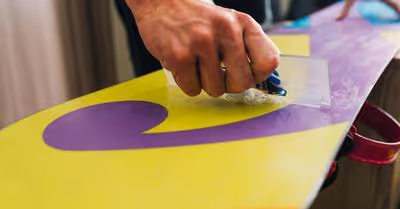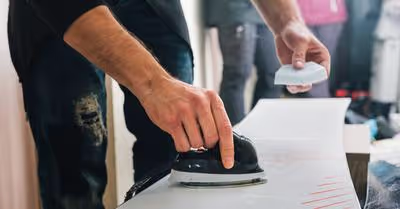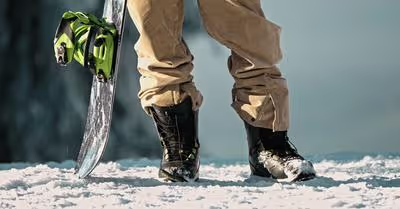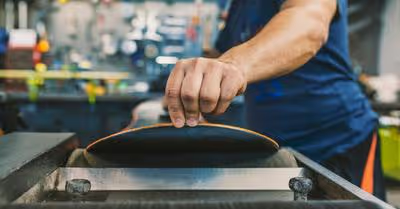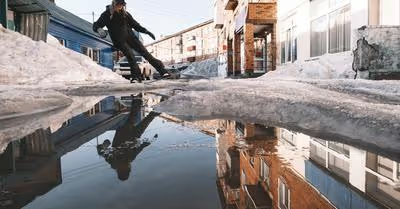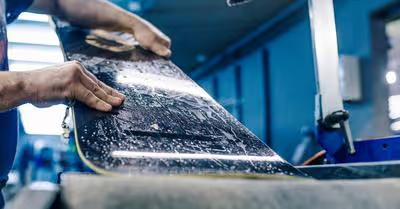Table of Contents
Heat Molding Snowboard Boots
The first step is to determine whether or not your boots are heat-moldable. Ask a technician at the store where you bought them if they can withstand direct heat without being destroyed. Some heat-moldable boots are designed to be molded by the heat of your feet and will form while you ride. Other types require direct heat to soften sufficiently to form properly.
If you're not sure if your boots can be heat-mold, or if you don't want to do it yourself, take them to a snowboard store and ask a skilled specialist for assistance. By overheating your boot liners, you risk ruining them.
This can lead them to become "packed out," meaning the cushioning and support they were designed to provide are no longer present. This can be seen on older liners as well as ones that have been overheated.
To hit the slopes, though, you don't need a heat-moldable choice. You could discover that standard liners are sufficient for your needs. It is important to remember that every person is unique, and preferences may vary, so when shopping for new boots or liners, keep this in mind. Now that we've got that out of the way, let's take a look at how you can heat mold snowboard boots.
Molding snowboarding boots is a strategy to improve your performance by customizing your equipment. Like Burton, Ride, and Vans, many modern snowboarding equipment manufacturers sell boots with heat moldable boot liners already installed.
These liners are generally constructed of EVA, a moldable polymer often used in running shoes. Kits and specific equipment are available in many stores, but it is very simple to perform yourself.
Heat Molding
To get started, remove the footbed from the heat-moldable boot liner's inside. Then, set a hairdryer to medium heat and place it inside the snowboarding boot liner's top. Squeeze the laces together to keep the warm air inside.
Keep an eye on the liners to ensure they don't overheat and become damaged. Each boot should be heated for around seven minutes. The lining should be warm enough to touch without being overly hot.
Socks that are suitable for snowboarding should be worn. A thick sock is a common error made by many cyclists. Snowboarding boots are made to be warm and comfortable, and a thinner sock will fit better.
Step into the boot with your socked foot as soon as possible, when the lining is at its hottest and ready to react to your pressure. Repeat with the other boot, and make a commitment to wearing them for a lengthy amount of time. The more active you are, the more form-fitting your boots will become.
A variety of liners and fit kits are available from a number of businesses. Riders who have had past ankle problems may benefit from heat-molded liners. As opposed to footbeds, liners cover your complete foot, ankle, and a piece of your shin.
Only the soles of your feet come into touch with footbeds. Liners conform to the movement of your heel, ankle, and toes. It is important to note that footbeds only leave an imprint of your feet.
For each boot, heat the lining for at least seven minutes. Make sure it's not so hot that you can't handle it with your hands. Put your snowboard socks on and your snowboard boots on. If the liner is still warm, use it. Socks that aren't too thick will be unpleasant and will influence the contour of the mold.
When it comes to heat molding snowboard boots, your foot pressure is crucial. It will contour the lining to your feet's outline. For at least 10 minutes, keep the snowboard boots on. Stay as still as possible and don't move.
To hold the boot in place, tighten the laces. The molded form will get stronger the longer you use the snowboard boots.
Why You Need Heat Molded Snowboard Boots
Your footwear should be tight rather than slack. You don't want them to be too tight, but you also don't want them to be too loose. When you're standing, your toes should just barely touch the front of your boots, and your ankle shouldn't wobble much.
If your feet go numb when wearing snowboard boots, it might be due to the boots being too small, too tight, or because the lacing mechanism is malfunctioning. Everyone's feet are different, and yours may be numb as a result of the footwear you pick.
Heat mold your snowboard boots if you want to enjoy a higher level of comfort and performance on the snow. Heat-moldable boots aren't for everyone, but they're worth checking for if you want a personalized fit that molds to your feet.
What can you do to make your snowboard boots more comfortable? For the first several days, wear only one pair of thin socks while breaking the boots in. Heat molding, as previously noted, is a wonderful approach to quickly break in your liners and form them to your foot's shape.
When to Heat Mold Snowboard Boots
The single most crucial aspect of snowboarding enjoyment is having properly fitting boots. When your feet hurt or you can't steer your board, it's difficult to have fun. Blisters or foot tiredness is commonly caused by ill-fitting boots.
Because your boots provide you leverage to control your board, you want them to be tight and comfortable. You wouldn't get behind the wheel of a car with a sloppy steering wheel, would you?
Before you assess the fit, lace the snowboard boots up first. If you don't, your foot will sit much further forward in the boot, making it seem smaller and tighter than it is, and you'll be more prone to purchase boots that are too big.
Second, lean forward into your riding position, knees slightly bent, after your shoes are properly tied. If your toes are touching the front of the liner or curling, go up a half or whole size since heat molding won't help much. You have an ideal fit if they are just touching/grazing the front of the lining in this position. If your feet cannot feel the lining, you might want to go down a half size.
Another way of knowing whether or not your snowboard boots fit is while on your toes, rock forward to see if you feel your heels protrude from the inside of the boot? When your weight is on the balls of your feet, and you're in your riding posture, there should be very little lift if the boot is properly laced.
Recent Articles



